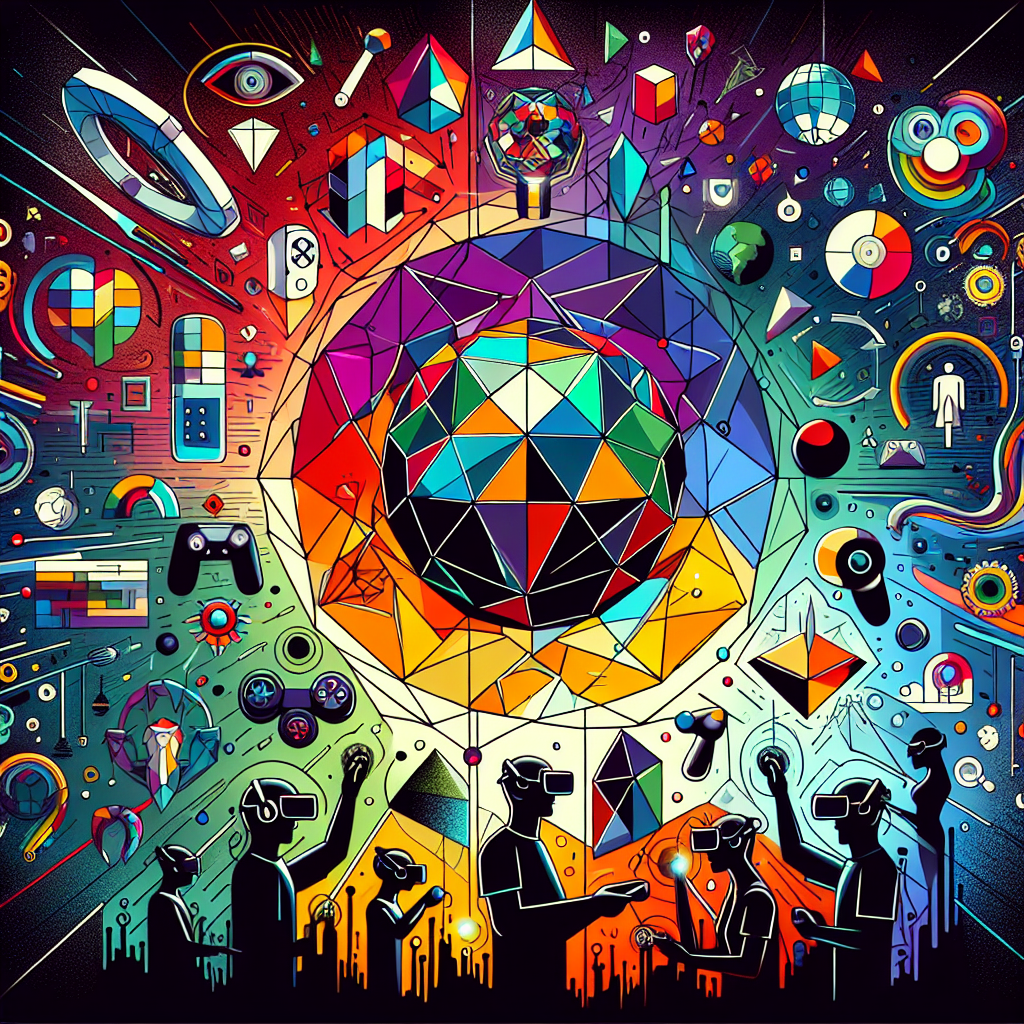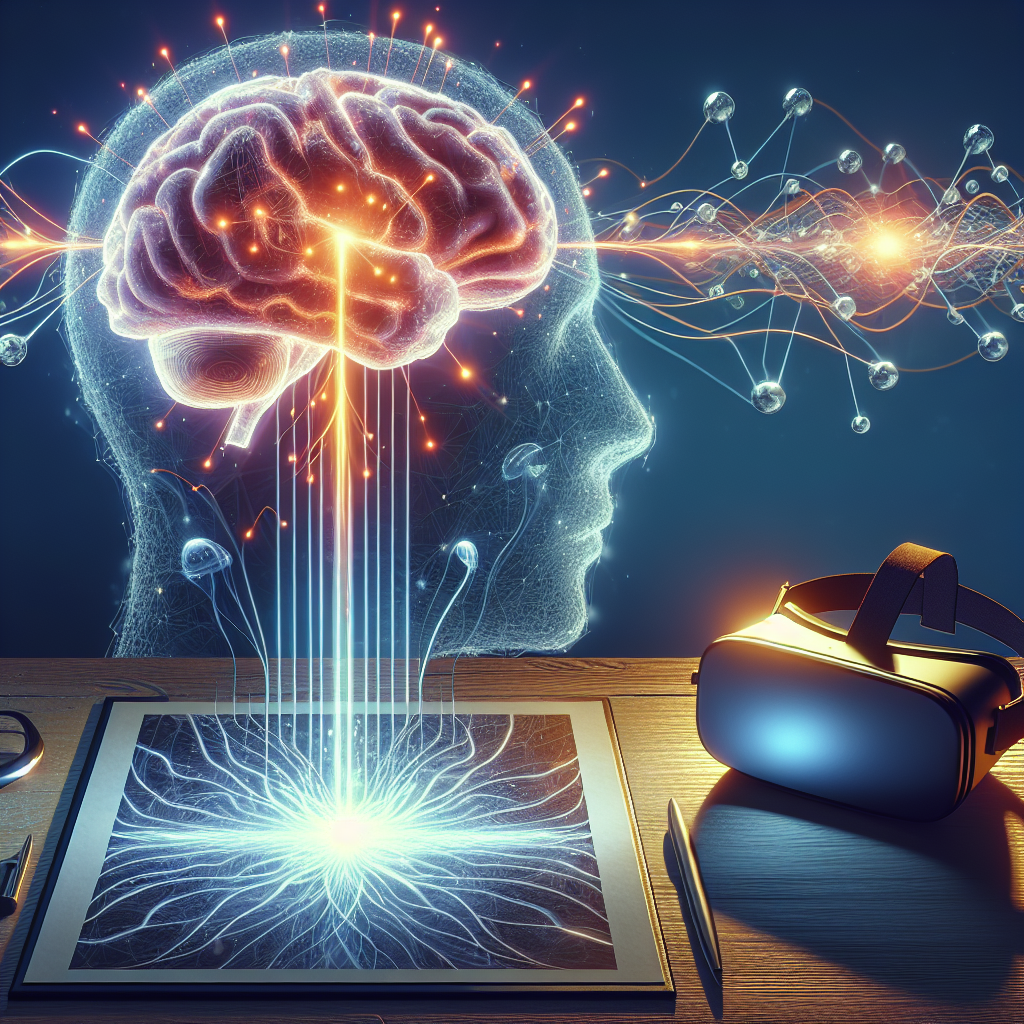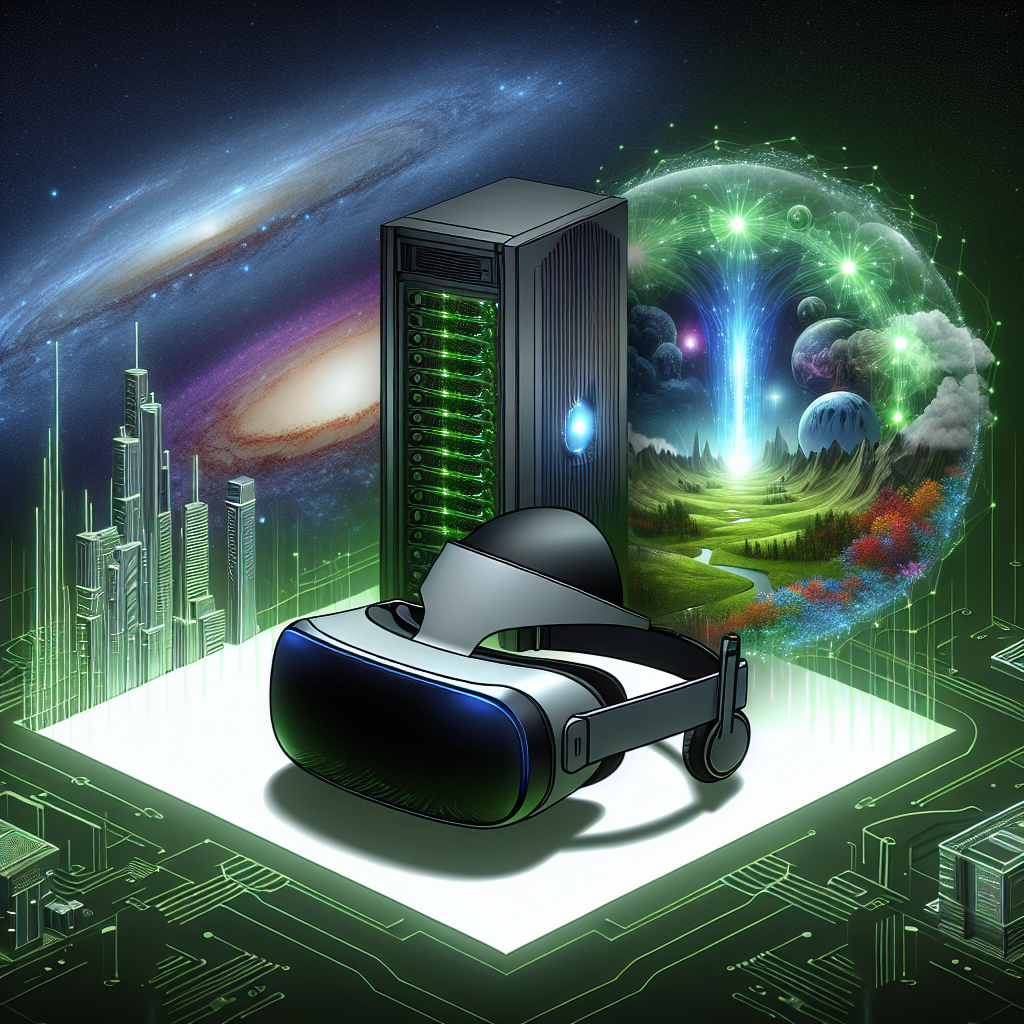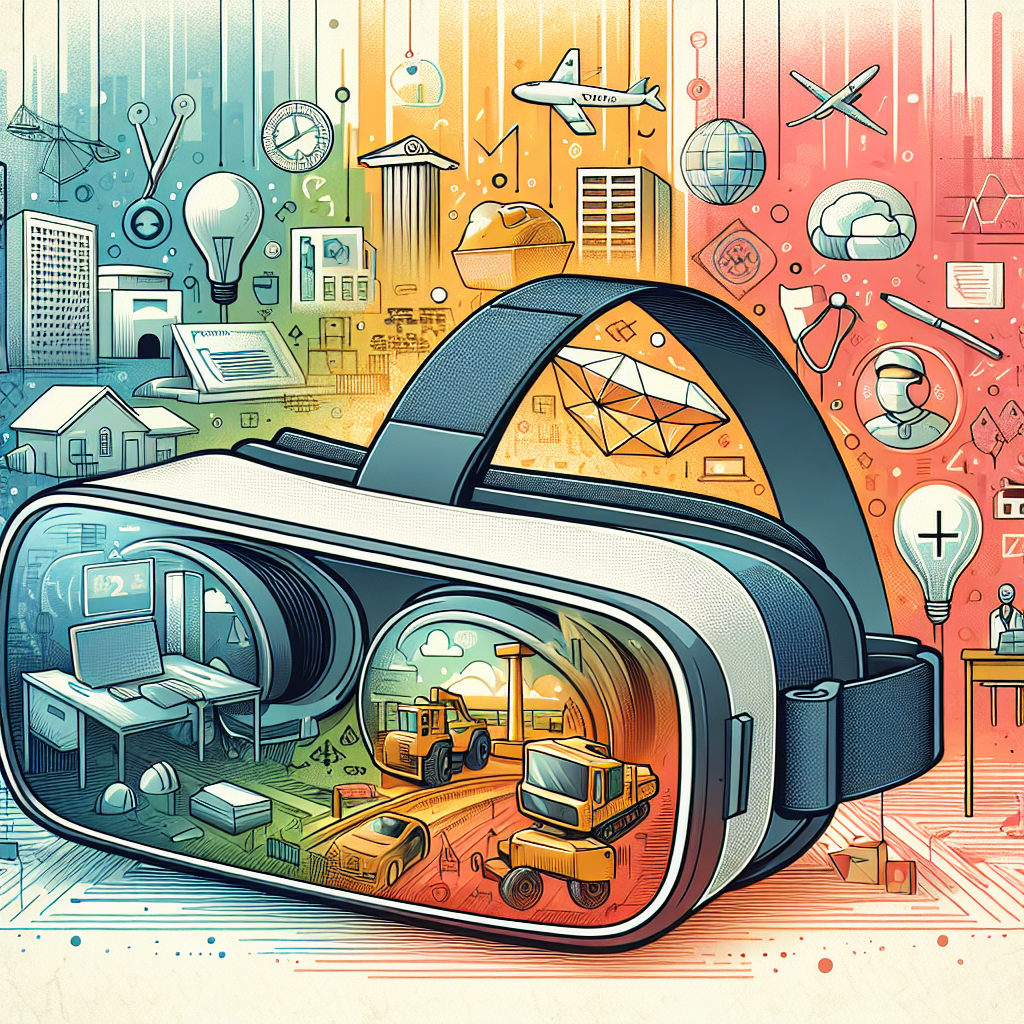Your cart is currently empty!
Tag: Immersive

The Art of Game Design: Creating Engaging and Immersive Experiences
The Art of Game Design: Creating Engaging and Immersive ExperiencesGame design is a complex and multifaceted process that involves a combination of creativity, technical skill, and an understanding of human psychology. The goal of game design is to create engaging and immersive experiences that captivate players and keep them coming back for more. In his book, “The Art of Game Design: A Book of Lenses,” game designer Jesse Schell delves into the intricacies of game design and offers valuable insights into how to create compelling games.
One of the key concepts Schell discusses in his book is the idea of “lenses,” which are different ways of looking at a game design problem. By examining a game through different lenses, designers can gain a better understanding of the various elements that make up a game and how they interact with each other. This can help designers identify potential issues and come up with creative solutions to address them.
Another important aspect of game design that Schell emphasizes is the importance of understanding the player’s experience. Designers must take into account the player’s emotions, motivations, and behaviors in order to create a game that is engaging and enjoyable. By putting themselves in the shoes of the player, designers can better anticipate how players will interact with the game and tailor their design choices accordingly.
In addition to understanding the player, Schell also stresses the importance of creating a cohesive and immersive game world. This involves developing a consistent visual style, narrative, and gameplay mechanics that all work together to create a seamless and engaging experience for the player. By immersing players in a rich and detailed game world, designers can create a sense of immersion that draws players in and keeps them engaged throughout the game.
Ultimately, the art of game design is a delicate balance between creativity and technical skill. Designers must be able to think outside the box and come up with innovative ideas, while also having the technical know-how to bring those ideas to life. By following the principles outlined in “The Art of Game Design: A Book of Lenses,” designers can create games that are not only technically sound but also engaging and immersive experiences that captivate players and leave a lasting impression.

The Psychology of Virtual Reality: Understanding the Power of Immersive Experiences
Virtual reality (VR) has become increasingly popular in recent years, with more and more people embracing this immersive technology for entertainment, education, and even therapy. But what is it about VR that makes it such a powerful tool for engaging our minds and emotions?One key aspect of VR that makes it so compelling is its ability to create a sense of presence, or the feeling of actually being in a different place or environment. This feeling of presence is achieved through a combination of realistic graphics, 3D audio, and interactive elements that make users feel like they are truly experiencing the virtual world around them.
This sense of presence can have a powerful impact on our emotions and behavior. Research has shown that VR experiences can evoke strong emotional responses, from fear and anxiety to joy and wonder. This emotional engagement can make VR experiences more memorable and impactful than traditional forms of media, leading to a deeper connection with the content and a greater likelihood of behavior change.
In addition to eliciting strong emotional responses, VR can also influence our perceptions and beliefs. Studies have found that VR can alter our sense of reality, leading us to question what is real and what is not. This ability to manipulate our perceptions can be used to challenge preconceived notions and biases, leading to greater empathy and understanding of different perspectives.
Furthermore, VR has the potential to enhance learning and memory retention. By immersing users in a virtual environment, VR can create a more engaging and interactive learning experience that is more effective at capturing and holding our attention. This can lead to improved learning outcomes and a greater retention of information compared to traditional methods.
Overall, the psychology of virtual reality is a fascinating and rapidly evolving field that offers a wealth of opportunities for exploration and discovery. By understanding the power of immersive experiences, we can harness the potential of VR to create more engaging, impactful, and transformative experiences for individuals in a wide range of contexts. Whether used for entertainment, education, therapy, or beyond, VR has the power to shape our perceptions, emotions, and behaviors in profound ways. As we continue to unlock the potential of this technology, the possibilities for its applications are truly endless.

The Power of NVIDIA in Creating Immersive VR Experiences
Virtual reality (VR) technology has revolutionized the way we experience digital content, allowing users to immerse themselves in virtual worlds like never before. One company that has been at the forefront of creating immersive VR experiences is NVIDIA, a leading provider of graphics processing units (GPUs) for gaming and professional markets.NVIDIA’s powerful GPUs are essential for creating realistic and immersive VR experiences. These GPUs are capable of rendering high-resolution graphics, complex physics simulations, and realistic lighting effects, all of which are necessary for creating convincing virtual environments. Additionally, NVIDIA’s GPUs support technologies like ray tracing and deep learning, which further enhance the visual fidelity of VR content.
One of NVIDIA’s key contributions to the VR industry is its VRWorks software development kit, which provides developers with tools and APIs to optimize their VR applications for NVIDIA GPUs. VRWorks includes features like multi-res shading, which improves performance by rendering different parts of the screen at different resolutions, and direct mode, which reduces latency for a more responsive VR experience. These tools help developers create VR content that runs smoothly and looks stunning on NVIDIA hardware.
NVIDIA’s commitment to pushing the boundaries of VR technology is evident in its collaboration with leading VR headset manufacturers like Oculus and HTC. NVIDIA works closely with these companies to ensure that their VR headsets are fully compatible with NVIDIA GPUs, allowing users to enjoy the best possible VR experience on their systems.
In addition to hardware and software support, NVIDIA also invests in research and development to advance the field of VR. The company is constantly exploring new technologies and techniques to improve the quality and realism of VR content. For example, NVIDIA’s research into foveated rendering, which focuses processing power on the parts of the screen that the user is looking at, has the potential to significantly improve VR performance and image quality.
Overall, NVIDIA’s powerful GPUs and commitment to innovation have played a crucial role in creating immersive VR experiences. By providing developers with the tools and technologies they need to create compelling VR content, NVIDIA has helped to push the boundaries of what is possible in virtual reality. As VR continues to evolve and grow in popularity, NVIDIA will no doubt remain a driving force in shaping the future of immersive digital experiences.

Immersive Experiences: How Virtual Reality is Transforming Industries
Virtual reality (VR) technology has been making waves in various industries, transforming the way businesses operate and how consumers engage with products and services. Immersive experiences created through VR have the power to transport users to new worlds, allowing them to interact with content in ways never before possible.One industry that has been greatly impacted by VR technology is the gaming industry. VR headsets have revolutionized the way people play video games, providing a more immersive and realistic gaming experience. Players can now feel like they are truly inside the game, interacting with characters and environments in a way that traditional gaming cannot replicate.
But gaming is just the tip of the iceberg when it comes to the potential of VR technology. Industries such as healthcare, education, and real estate are also benefiting from the immersive experiences that VR can provide.
In healthcare, VR is being used for training purposes, allowing medical students to practice surgeries and procedures in a realistic virtual environment. This hands-on experience helps them develop the skills they need to succeed in the operating room. VR is also being used for therapeutic purposes, such as treating phobias and PTSD.
In the field of education, VR is transforming the way students learn by providing them with immersive experiences that bring learning to life. For example, students can take virtual field trips to historical sites or explore the depths of the ocean without ever leaving the classroom. This hands-on approach to learning helps students better understand complex concepts and retain information more effectively.
In the real estate industry, VR technology is being used to create virtual tours of properties, allowing potential buyers to explore homes and buildings in a realistic and immersive way. This has revolutionized the way properties are marketed and has made the home-buying process more convenient for buyers.
Overall, the possibilities of VR technology are endless, and as the technology continues to evolve, we can expect to see even more industries benefiting from the immersive experiences that VR can provide. From gaming to healthcare to education, VR is transforming industries and changing the way we interact with content. The future of immersive experiences looks bright, and VR technology is at the forefront of this exciting transformation.
